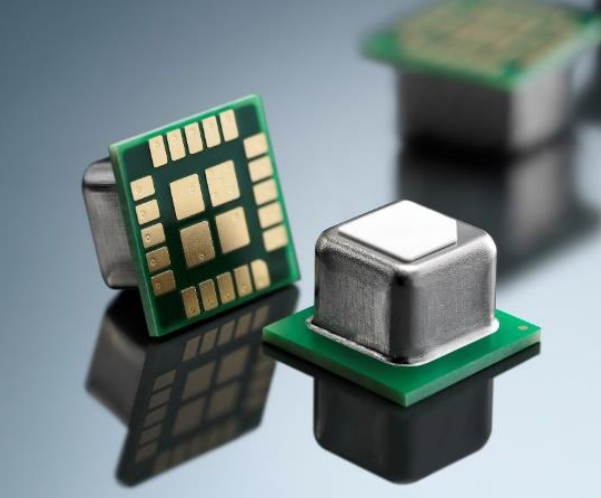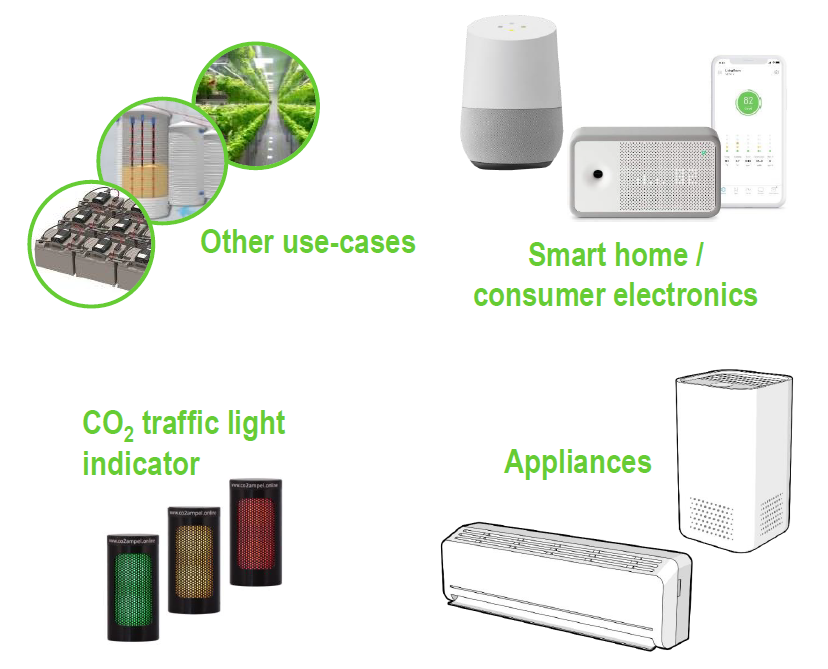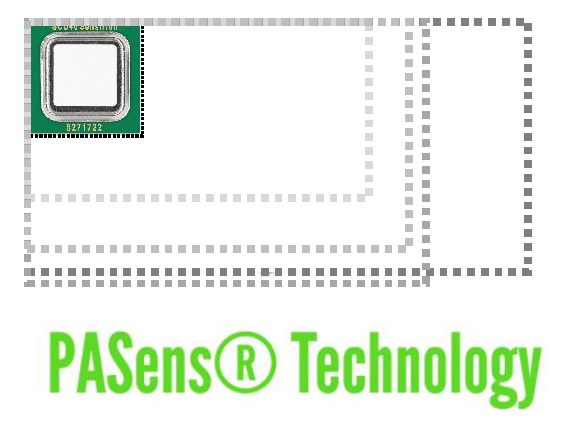Overview
On November 1, 2021, the Ministry of Economy, Trade and Industry announced the "Guidelines for Selecting Carbon Dioxide Concentration Measuring Instruments".
In this article, we will introduce the CO2 detection principle (photoacoustic method) newly added to the guidelines and the CO2 sensor made by the Swiss sensor manufacturer SENSIRION that complies with this principle.
What is the Ministry of Economy, Trade and Industry's "Guidelines for Selection of Carbon Dioxide Concentration Measuring Instruments"?
What is Photoacoustic?
"SENSIRION" Sensor specialist manufacturer from Switzerland, providing the only photoacoustic CO2 sensor in the industry
Features of the SENSIRION SCD4x series photoacoustic CO2 sensors
summary
If you are interested or have any questions, please use the contact button.
What is the Ministry of Economy, Trade and Industry's "Guidelines for Selection of Carbon Dioxide Concentration Measuring Instruments"?
As a measure to prevent infection with the COVID-19, CO2 concentration measurement using a carbon dioxide concentration measuring device as a method to check whether ventilation is sufficiently performed with the aim of improving "closed spaces with poor ventilation" is recommended. On the other hand, the measurement accuracy of measuring instruments varies depending on the detection principle used in the measuring instrument, etc., so it has continued to be unclear whether correct concentration measurement is being performed.
With the announcement of the Ministry of Economy, Trade and Industry's guidelines this time, a pseudo carbon dioxide concentration measurement device that converts the CO2 concentration from the H 2 (hydrogen) concentration using a VOC gas sensor that has been on the market Devices that react to ethanol and show abnormal values) have been eliminated from the market, and measuring instruments based on the optical detection principle that can directly measure CO2 molecules that can accurately measure carbon dioxide concentration have been installed correctly. I think it will be used to improve closed spaces with poor ventilation.
Newly added "photoacoustic method" to equipment specifications
If you take a closer look at the Ministry of Economy, Trade and Industry's announcement this time, the following two device specifications are shown in the guidelines (here for the guidelines announced by the Ministry of Economy, Trade and Industry).
1. The detection principle is optical.
The optical method refers to detection methods that use specific wavelengths of light that carbon dioxide molecules absorb, such as NDIR (Non Dispersive InfraRed) and photoacoustic.
2. The measuring instrument must have a function for correction.
Compensation functions refer to functions that automatically or manually correct deviations in measured values. Some manufacturers call it calibration.
Among them, the principle of CO2 gas detection uses an optical method. (Photoacoustic) detection method is newly added.
From here, we will explain the detection principle and advantages of this newly added photoacoustic method.
What is Photoacoustic?
Common CO2 sensors are based on the principle of the NDIR method (non-dispersive infrared absorption method). These NDIR-type sensors require an optical beam path in the optical cavity, and their sensitivity is directly proportional to the path length, so increasing the sensitivity increases their size. Furthermore, miniaturization without loss of sensitivity is difficult, limiting its use to low CO2 measurements. Therefore, NDIR-type sensors were not expected to be cost-effective due to their size and sensitivity limitations.
Also, although the photoacoustic principle had already been invented in 1880, it was not easily adaptable to a common CO2 sensor due to the lack of technical components. However, due to its excellent detection performance, it was used in laboratory-scale photoacoustic measuring instruments.
The principle of measurement is to first radiate narrow-band light from an IR emitter into the space of a completely sealed measuring cell, which matches the absorption band of CO2 molecules. CO2 molecules in the measuring cell absorb part of the irradiated light (4.26 µm wavelength), while other molecules cannot due to the spectrum of the emitted light. The more molecules present in the measuring cell, the more energy is absorbed. The absorbed energy of the CO2 molecules mainly causes molecular vibrations, and the translational kinetic energy of the molecules increases. Since the measuring cell is closed, pressure builds up inside the cell. By adjusting the light source, the cyclic pressure in the measuring cell changes, which is measured with a microphone. The resulting microphone signal is a measure of the number of CO2 molecules present in the measurement cell, which is used to calculate the CO2 concentration. (Figure 1)
[Figure 1: SCD4x internal structure and measurement principle]
"SENSIRION" Sensor specialist manufacturer from Switzerland, providing the only photoacoustic CO2 sensor in the industry

Although the photoacoustic method is recommended by the Ministry of Economy, Trade and Industry, SENSIRION is the only company in the industry that provides mass-production CO2 sensors using this measurement method.
SENSIRION is the first company in the world to start mass production of the photoacoustic CO2 sensor "SCD4x series" in April 2021. (Fig.2)
Based on the knowledge (CMOSens® technology) cultivated through the development of miniaturized temperature and humidity sensors, we have established PASens® technology based on photoacoustic detection principles and have successfully introduced it to CO2 sensors. In addition, the adoption of PASens® technology has significantly reduced the size of the CO2 sensor without compromising sensor performance. This is because the sensor sensitivity is independent of the optical cavity size. In addition, in-house developed components simplify the configuration and dramatically reduce the number of components, making it possible to mass-produce photoacoustic CO2 sensors in a very cost-effective manner. As a result, many devices on the market have begun to be equipped with this technology.

"SCD4x”CO2 Examples of sensor adoption by equipment manufacturers in Japan and overseas (Fig. 3)
・ CO2 Measurement monitor equipment
・IAQ monitoring in air purification and air conditioning control equipment
・Environmental management in IoT and smart home
・Office building ventilation system
・Environmental management of agriculture and greenhouse cultivation
Features of the SENSIRION SCD4x series photoacoustic CO2 sensors

SENSIRION of the company SCD4x The features of the series are as follows.
・Excellent in high accuracy and long-term stability, guaranteed operation Ten over a year
・Minimum module size (10.1 mm× 10.1 mm× 6.5 mm)
・Can be surface-mounted directly on the substrate and can be used with an automatic mounting machine
・Unique sensor that stabilizes sensor accuracy over a long period of time
Own concentration calibration algorithm
-ASC(automatic self-calibration) When FRC (forced recalibration)
・Can be installed in wearable devices with excellent vibration resistance
・Achieves a module with a minimum component configuration, and can be provided at a low cost
In this way, conventional NDIR It is a sensor that completely solves the technical problems of the method.
Summary
- The detection principle of the photoacoustic method was newly added to the "Guidelines for Selecting Carbon Dioxide Concentration Measuring Instruments" announced by the Ministry of Economy, Trade and Industry.
- SENSIRION is the only company that mass-produces photoacoustic CO2 sensors in the industry.
- SENSIRION's SCD4x series has the same high-precision measurement function as the NDIR method, but has further improved functions and performance.
Inquiry / Quotation
Please feel free to contact us if you have any questions / interests.
In addition, we have installed SENSIRION 's high-reliability environmental sensor lineup.
We provide Indoor air quality monitoring solution "AiryQonnect". (Click here for details)
Please check this also.
Sensirion Manufacturer information Top
If you want to return to Sensirion manufacturer information Top, please click below.
